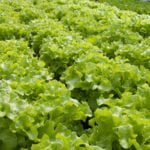Pressure treated wood is a common material used in building outdoor structures and garden beds. However, the question remains: is pressure treated wood bad for vegetable gardens?
Pressure treated wood is known for its durability and resistance to decay, making it a popular choice for constructing raised garden beds and other garden structures. In this article, we will explore the process of pressure treating wood, the potential risks associated with using it in vegetable gardens, regulations and guidelines for its use, alternative options, the benefits of pressure treated wood, and best practices to minimize any potential risks.
Pressure treating wood involves treating it with chemicals under high pressure to protect it from rotting and insect damage. The process typically involves using chemicals such as chromated copper arsenate (CCA), copper azole (CA-B), or alkaline copper quaternary (ACQ). These chemicals penetrate the wood to provide long-lasting protection.
While pressure treated wood is effective at prolonging the lifespan of garden structures, there are concerns about the potential health risks associated with using it in vegetable gardens. The chemicals used in pressure treated wood have been known to leach into soil over time, posing a risk of contaminating edible plants. Additionally, there is a concern about exposure to these chemicals through direct contact and inhalation during construction and maintenance of garden beds.
Understanding Pressure Treated Wood
Pressure treated wood is a popular choice for constructing garden beds, as it is known for its durability and resistance to decay. Understanding the process of pressure treating wood can shed light on why it is commonly used in outdoor environments.
Pressure treating involves placing the wood inside a pressurized cylindrical tank, where it is treated with a preservative solution under high pressure. This process allows the preservatives to deeply penetrate the wood, making it resistant to rot, decay, and insect damage.
The chemicals used in pressure treated wood are what make it resistant to decay and insects. Historically, chromated copper arsenate (CCA) was commonly used as a preservative for pressure treated wood. However, due to concerns about the leaching of arsenic, CCA-treated wood has been phased out for residential use.
Today, the most common chemicals used in pressure treated wood are alkaline copper quaternary (ACQ), copper azole (CA), and borates. These chemicals provide protection against decay and insects without posing the same level of health risks as CCA.
Potential Health Risks
One of the primary concerns regarding pressure treated wood in vegetable gardens is whether or not it poses health risks. The potential risk arises from the leaching of chemicals from the wood into the soil, which can then be taken up by plants.
While there is limited evidence of direct harm from consuming vegetables grown in planters made of pressure treated wood, some studies have indicated that trace amounts of chemical compounds may leach into surrounding soil. It is important to consider these potential health risks when deciding whether to use pressure treated wood in vegetable gardens.
Impact on Soil and Plants
Another consideration when using pressure treated wood in vegetable gardens is its impact on soil and plants. The leaching of chemicals from the wood can alter the pH and nutrient levels in the soil, potentially affecting plant growth. In addition, certain plants may be more sensitive to the presence of these chemicals in their immediate environment. Understanding how pressure treated wood can affect soil and plants is crucial for making informed decisions about its use in garden construction.
The Potential Risks
Pressure treated wood has been a popular choice for constructing garden beds due to its resistance to decay and rot. However, there is a growing concern about the potential risks associated with using pressure treated wood in vegetable gardens. One of the main concerns is the presence of harmful chemicals in pressure treated wood that may leach into the soil and affect plant growth.
The process of pressure treating wood involves subjecting it to high pressure to force preservatives deep into the wood fibers, making it resistant to insects and decay. The most common chemicals used in this process are chromated copper arsenate (CCA), creosote, and pentachlorophenol. These chemicals are effective in prolonging the lifespan of the wood, but they also raise concerns about their potential impact on human health and the environment.
When pressure treated wood is used in vegetable gardens, there is a risk of chemical leaching into the soil. This can contaminate the surrounding environment and pose a threat to both plant and human health. Ingesting or absorbing these chemicals through contact with contaminated soil or plants can have detrimental effects on overall well-being. As a result, many gardeners are reconsidering the use of pressure treated wood in their vegetable gardens in favor of safer alternatives.
| Potential Risk | Description |
|---|---|
| Chemical Leaching | Chemicals from pressure treated wood can leach into the soil, affecting plant growth and potentially harming human health. |
| Environmental Contamination | The use of pressure treated wood can lead to environmental contamination as chemicals seep into surrounding areas. |
| Health Concerns | Ingesting or coming into contact with chemicals from pressure treated wood can result in various health issues for humans and animals. |
As more information becomes available about the potential risks associated with pressure treated wood, it is important for gardeners to consider alternative materials for constructing their vegetable garden beds. Despite its initial benefits, the long-term impact of using pressure treated wood on both human health and the environment raises serious concerns that cannot be ignored.
Regulations and Guidelines
Pressure treated wood is a common material used for constructing garden beds, fences, and other outdoor structures. It undergoes a process where preservatives are forced into the wood under pressure, making it resistant to decay and insect damage. The most commonly used preservatives are chromated copper arsenate (CCA), alkaline copper quat (ACQ), and copper azole. While pressure treated wood is durable and long-lasting, there has been concern about the potential risks of using it in vegetable gardens.
In the past, CCA was the primary chemical used to pressure treat wood. However, due to health concerns over the leaching of arsenic into the soil, CCA-treated wood is no longer recommended for use in vegetable gardens.
Instead, ACQ and copper azole are now the main chemicals used for treating wood that will be in contact with soil. These newer treatments are considered safer for use around food crops but must still be handled carefully to minimize any potential risks.
When using pressure treated wood in vegetable gardens, it is essential to follow regulations and guidelines set by organizations such as the Environmental Protection Agency (EPA) and the International Residential Code (IRC). These regulations outline specific guidelines for usage, handling, storage, and disposal of pressure treated wood to ensure that it is used safely and responsibly.
Additionally, it’s crucial to choose pressure treated wood that is labeled as suitable for ground contact or direct soil exposure when constructing garden beds.
Overall, while there are potential risks associated with using pressure treated wood in vegetable gardens, following the necessary regulations and guidelines can help mitigate these risks. When handled and used properly, pressure treated wood can be a suitable option for building durable and long-lasting vegetable garden beds.
| Regulations and Guidelines | Pressure Treated Wood Usage |
|---|---|
| Follow regulations from EPA and IRC | Choose wood labeled for ground contact |
| Handle carefully to minimize risk | Use lumber treated with ACQ or copper azole |
Alternative Options
When it comes to constructing vegetable garden beds, many people opt for pressure treated wood due to its durability and resistance to rot and pests. However, if you are concerned about the potential risks of using pressure treated wood in your vegetable garden, there are alternative options available that can provide a safe and healthy environment for your plants.
Natural Cedar or Redwood
One alternative to pressure treated wood is natural cedar or redwood. These types of wood are naturally resistant to decay and insects, making them a popular choice for garden construction. While they may be more expensive than pressure treated wood, their natural properties make them a safer option for vegetable gardens.
Composite Lumber
Composite lumber is another alternative that is composed of a blend of wood fibers and recycled plastic. This material is durable, long-lasting, and resistant to rot and insect damage. It also does not require any chemical treatments, making it a safe choice for vegetable garden beds.
Stone or Brick
For a more permanent option, stone or brick can be used to construct raised garden beds. These materials do not leach any harmful chemicals into the soil and provide excellent drainage for your plants. While they may require more effort to install, they offer a natural and chemical-free option for your vegetable garden.
By considering these alternative options for constructing your vegetable garden beds, you can create a safe and healthy environment for your plants without the potential risks associated with pressure treated wood. Each material has its own benefits and considerations, so it’s important to weigh your options before making a decision on what will work best for your garden.
Benefits of Pressure Treated Wood
Pressure treated wood offers several benefits for constructing vegetable garden beds. Here are some advantages of using pressure treated wood:
1. Durability: Pressure treated wood is resistant to decay, insects, and rot, making it a long-lasting choice for garden construction.
2. Low Maintenance: Because it is less susceptible to damage from moisture and pests, pressure treated wood requires minimal maintenance compared to untreated wood or other materials.
3. Cost-Effective: While the up-front cost of pressure treated wood may be higher than untreated wood or alternative materials, its longevity and low maintenance needs can make it a cost-effective option in the long run.
While there are potential risks and concerns associated with using pressure treated wood in vegetable gardens, it’s important to weigh these against the benefits. With proper precautions and adherence to regulations and guidelines, many gardeners find that the benefits of using pressure treated wood outweigh the potential drawbacks.
It is essential to be aware of the potential risks and take necessary steps to minimize them when using pressure treated wood in vegetable gardens. By understanding the proper use and best practices for this material, gardeners can confidently utilize pressure treated wood while safeguarding their health and the well-being of their plants.
Best Practices
When using pressure treated wood in vegetable gardens, it is important to follow certain best practices to minimize the potential risks associated with its use. One of the key best practices is to line the interior of the pressure treated wood garden bed with a barrier, such as heavy-duty plastic sheeting, to prevent direct contact between the soil and the treated wood.
This can help reduce the leaching of chemicals into the soil and protect the vegetables from potential contamination.
Another best practice for using pressure treated wood in vegetable gardens is to avoid using it for plants that are directly edible, such as root vegetables or leafy greens. Instead, consider using untreated wood or alternative materials for garden beds where these types of vegetables will be grown. Additionally, it is recommended to regularly monitor the condition of pressure treated wood garden beds, and replace any deteriorating wood to prevent potential exposure to harmful chemicals.
In addition, it is important to always wear protective gear, such as gloves and a mask, when handling pressure treated wood in order to minimize direct contact with the chemicals used in the treatment process. By following these best practices, gardeners can continue to use pressure treated wood in their vegetable gardens while minimizing potential risks to their health and the environment.
Conclusion
In conclusion, while pressure treated wood is a commonly used material in garden construction due to its durability and resistance to decay, it is important to consider the potential risks it may pose to vegetable gardens. The process of pressure treating wood involves the use of chemicals such as chromated copper arsenate (CCA) which can leach into the soil and affect plant growth. Additionally, there are concerns about the potential health risks associated with exposure to these chemicals.
It is important for gardeners to be aware of the regulations and guidelines for using pressure treated wood in vegetable gardens, as well as to consider alternative options for constructing garden beds. In some cases, using natural or untreated wood, cedar or composite materials may be a safer choice for growing vegetables.
While pressure treated wood does have its benefits in terms of longevity and resistance to pests and decay, it is essential to weigh these advantages against the potential risks. Gardeners should carefully consider their options and make an informed decision based on their individual circumstances and concerns. Ultimately, whether pressure treated wood is bad for vegetable gardens depends on a variety of factors including local regulations, personal health considerations, and environmental impact.
Frequently Asked Questions
Can You Use Pressure Treated Wood for Vegetables?
Using pressure treated wood for vegetables is a controversial topic. While some experts say that the chemicals in the wood can leach into the soil and potentially harm the plants, others argue that the amount of chemicals released is minimal and not harmful to humans.
Is Home Depot Pressure Treated Wood Safe for Vegetable Gardens?
Home Depot sells pressure treated wood that is labeled as safe for use in vegetable gardens. The company claims that their products are safe because they use a different, less toxic method of pressurizing the wood with preservatives.
However, it’s always best to do thorough research and consider all factors before using any type of pressure treated wood in a vegetable garden.
Does Pressure Treated Wood Leach Chemicals Into Soil?
Pressure treated wood has been known to leach small amounts of chemicals into the surrounding soil over time. This can be concerning for those who want to grow edible plants in close proximity to this type of wood. It’s important to weigh the potential risks and benefits before using pressure treated wood in gardening projects.

If you’re looking to get into vegetable gardening, or are just looking for some tips on how to make your current garden better, then you’ve come to the right place! My name is Ethel and I have been gardening for years. In this blog, I’m going to share with you some of my best tips on how to create a successful vegetable garden.





